Cardiomyocytes
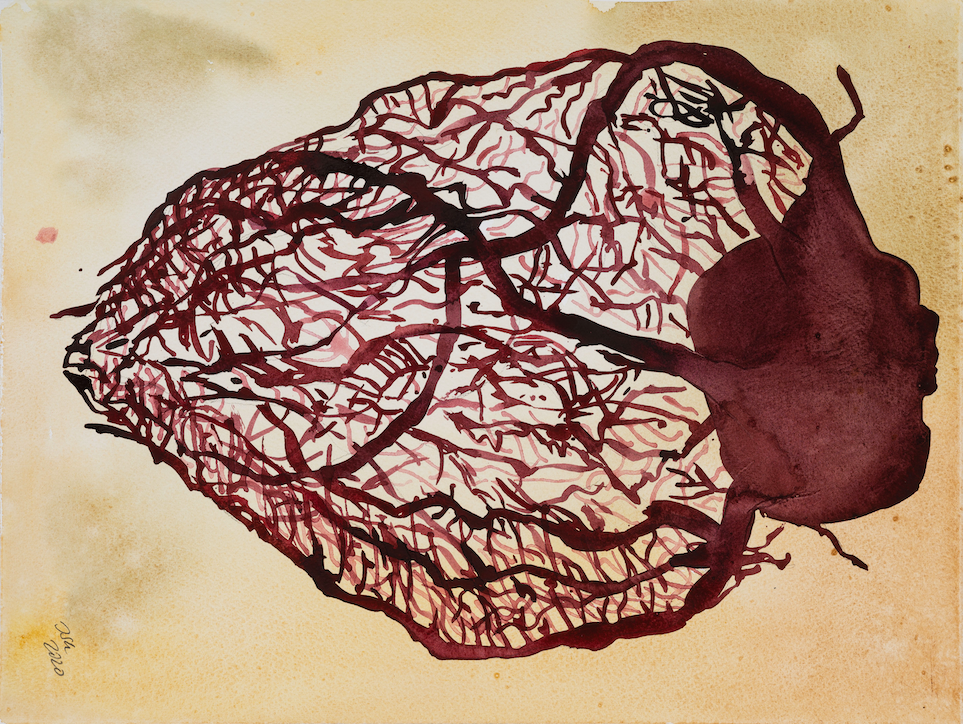
Biorelevant culture of cardiac cells on Biolaminin substrates
Laminin expression in muscle tissue
Laminin-211 and laminin-221 are expressed specifically in the basal lamina of striated muscles and an expression deficiency in the alpha-2 laminins results in muscular dystrophy, accompanied by a dilated cardiomyopathy (Oliviéro, 2000). Laminin isoforms containing the alpha-2, -4, and -5 subunits are critically important for the maintenance and development of heart muscle tissue (Miner, 1997). During stem cell cardiac differentiation, a distinct switch in the expression profile of laminin subunits has been reported with laminin-411/421 pre-dominantly expressed early in progenitors and laminin-211/221 expressed later in cardiomyocytes (Ja, 2015). The main laminin isoforms expressed in the adult heart are laminin-211 and laminin-221, with laminin-521 and 421 in lower levels (Yap et al. 2020).
Effective cardiomyocyte differentiation on cardiac-specific laminin isoform 221
A highly reproducible, chemically defined, xeno-free laminin-based differentiation protocol to generate stem cell-derived cardiovascular progenitors (CVPs) was reported in 2019 (Yap, 2019). Laminin-221 (LN221) was identified as the most likely expressed cardiac laminin and the authors show that this protein promotes differentiation of pluripotent human embryonic stem cells (hESCs) toward cardiomyocyte lineage and downregulates pluripotency and teratoma-associated genes. Single-cell RNA sequencing of CVPs derived from hESC lines identified three main progenitor subpopulations. These CVPs were transplanted into myocardial infarction mice, where heart function was improved as measured by echocardiogram and human heart muscle bundle formation was identified histologically.
Using cardiac muscle-specific laminin-211, human iPSCs were effectively differentiated into cardiomyocytes using small molecules (Minami, 2012). The same researchers later published another article with Shinya Yamanaka as co-author, where they again used laminin-211 for cardiac differentiation of human iPSC (Hirata, 2014). Laminin-211 has also been used to culture adult human cardiomyocytes (Kuroda, 2015).
Laminin-521 in cardiomyocyte differentiation
Laminin-521 also has properties that improve the isolation and expansion of adult stem cells and progenitors. In a publication by Kuroda et al., iPSCs were efficiently expanded and differentiated to cardiomyocytes on laminin-521 (Kuroda, 2015). Dr. Joseph Wu´s lab also showed that laminin-521 is an optimal matrix for chemically defined differentiation of human iPSC to cardiomyocytes (Burridge, 2014). Laminin-521 was compared to five other feeder-free matrices. They concluded that laminin had the fastest human iPSC growth rate, generated the highest number of cardiomyocytes, and only laminin could sustain long-term adhesion (>15 d) during cardiac differentiation in a chemically defined medium.
This is in accordance with recent data presented by researchers at Icagen Inc., demonstrating that the laminin-521 cell culture matrix maintains the differentiation potential of mouse and human satellite cell-derived myoblasts, even during long-term culture expansion (Penton, 2016). Laminin-521 supports increased proliferation during expansion and superior differentiation with myotube hypertrophy, larger myotubes, and higher amounts of nuclei per myotube. Moreover, Penton et al. show that laminin-521 supports more consistent and reliable differentiation over long-term culture and is the only substrate facilitating high-level fusion following long-term culture.
Laminin-521 supports increased differentiation potential without altering the traditional Pax7/MyoD paradigm and the results are translational across several mouse backgrounds, human cells, and disease states.
Protocol:
Penton et al. 2016: Long-term expansion and differentiation of myogenic progenitors on laminin
Yap et al. 2019: In vivo generation of post-infarct human cardiac muscle by laminin-promoted cardiovascular progenitors
Laminin IHC staining of human heart muscle
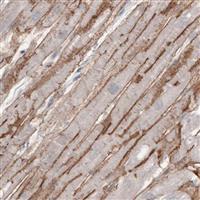
Anti-LAMA2 antibody AMAb91166 (Atlas Antibodies).
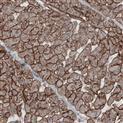
Anti-LAMB2 antibody AMAb91097 (Atlas Antibodies).
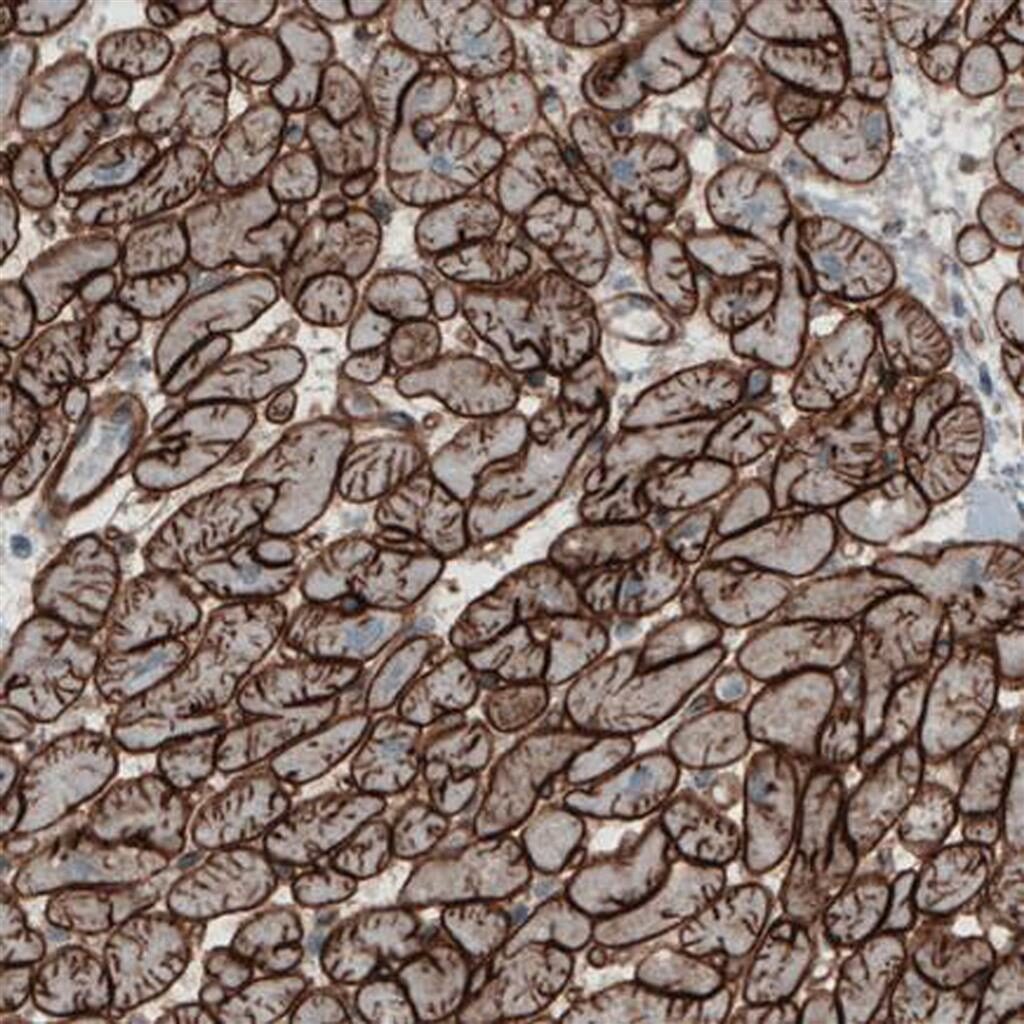
Anti-LAMC1 antibody AMAb91137 (Atlas Antibodies).
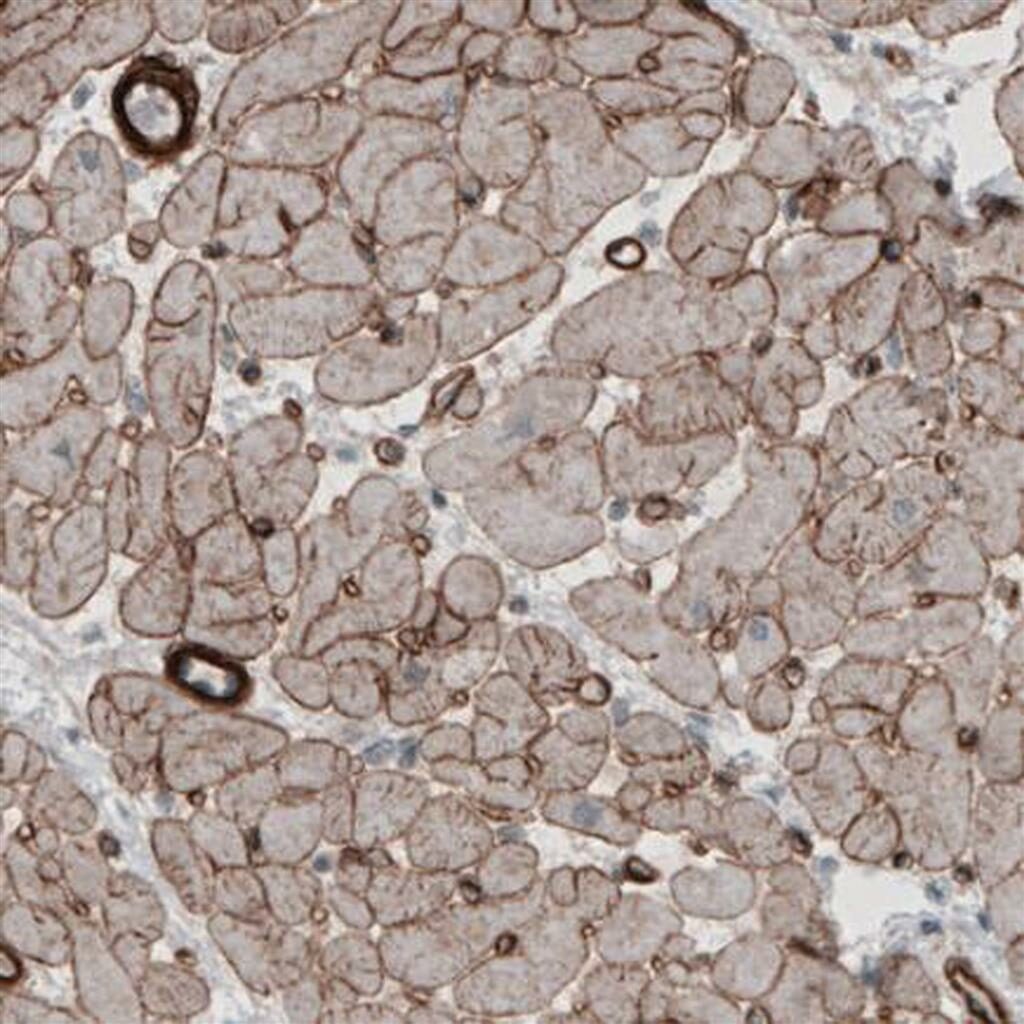
Anti-LAMA5 antibody AMAb91124 (Atlas Antibodies).
Succeed with your application
-
Pluripotent stem cell-derived cardiovascular progenitors differentiated on laminin 221 regenerate and improve function of infarcted swine hearts
Yap L, Chong LY, Tan C, Adusumalli S, Seow M, Guo J, Cai Z, Loo SJ, Lim E, Lath N, Ye L, Petretto E, Tryggvason K. BiorXiv, 2021
Read more -
In Vivo Generation of Post-infarct Human Cardiac Muscle by Laminin-Promoted Cardiovascular Progenitors
Yap L., Wang J.-W., Moreno-Moral A., de Kleijn D.P.V., Petretto E., Tryggvason K. Cell Reports, 2019
Read more -
Laminin 521 maintains differentiation potential of mouse and human satellite cell-derived myoblasts during long-term culture expansion
Penton C.M., Badarinarayana V., Prisco J., Powers E., Pincus M., Allen R.E., August P.R. Skeletal Muscle, 2016
Read more -
Instructions 001: Coating with Biolaminin substrates
Protocol and concentration calculations for coating cultureware with Biolaminin
Open pdf -
Chemically defined generation of human cardiomyocytes
Burridge P., Elena Matsa E., Shukla P., Lin Z., Churko J., Ebert A., Lan F., Diecke S., Huber B., Mordwinkin N., Plews J., Abilez O., Cui B., Gold J. & Wu J. Nature methods, 2014
Read more -
Application note 009: Cardiomyocyte differentiation — on a combination of full-length Biolaminin® 521 (LN521) and Biolaminin 221 (LN221) substrates
Pluripotent stem cell (PSC)-derived cardiomyocytes play a key role in therapies of the future, servi
 Open pdf
Open pdf
Biolaminin Key Advantages
Biolaminin 521 is an optimal matrix for chemically defined differentiation of human iPSC to cardiomyocytes. Laminin-521 supports increased proliferation during expansion and superior differentiation with myotube hypertrophy, larger myotubes and higher amounts of nuclei per myotube. Biolaminin 211 can effectively be used for cardiac differentiation of human iPSC and also for the culture of adult human cardiomyocytes.
Specific laminin isoforms are present in different tissue microenvironments and are essential for cell survival, proliferation, and differentiation. Biolaminin products allow you to imitate the natural cell-matrix interactions in vitro.
Our products have consistent composition and quality. This enables minimized variability between experiments.
All our matrices are chemically defined and animal origin-free, which makes them ideal substrates for each level of the scientific process – from basic research to clinical applications.
Numerous scientists have found our products and finally succeeded in their specific stem cell application. The power of full-length laminins incorporated into various cell systems is well documented in scientific articles and clinical trials.
Recommended products
-

Biolaminin 521 LN (LN521)
Full-length human recombinant laminin-521
Biolaminin 521 LN is a full-length laminin-521 substrate—the natural laminin for pluripotent stem cells, reliably facilitating ESC and iPSC self-renewal in a chemically defined, xeno-free stem cell culture system. It also uniquely promotes the growth and identity of various tissue-specific human cell types.View product -

Biolaminin 221 LN (LN221)
Full-length human recombinant laminin-221
Biolaminin 221 supports the growth, survival, and differentiation of a wide range of tissue-specific cell types, including cardiac cells and skeletal muscle cells.View product -

Biolaminin 211 LN (LN211)
Full-length human recombinant laminin-211
Biolaminin 211 supports the growth, survival, and differentiation of a wide range of tissue-specific cell types, including motor neurons, cardiac cells, and skeletal muscle cells.View product
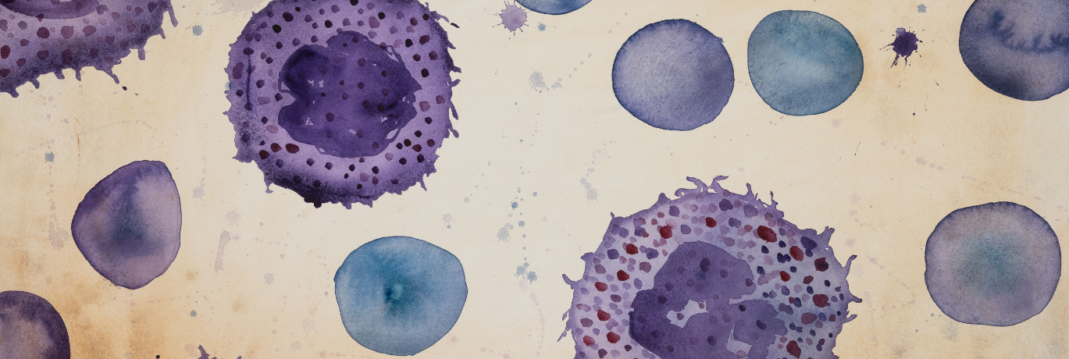
Talk to our team for customized support
We are here to help you in your journey.